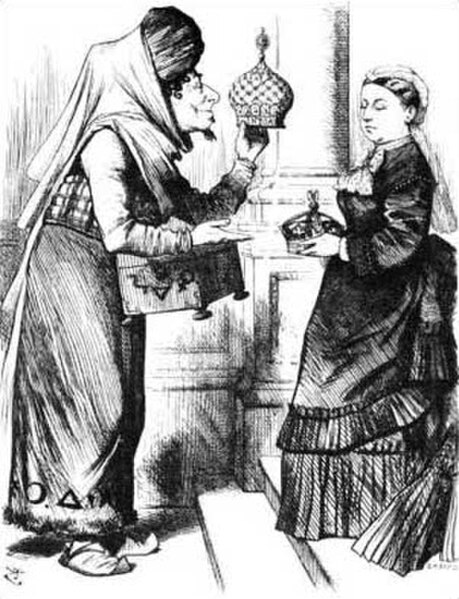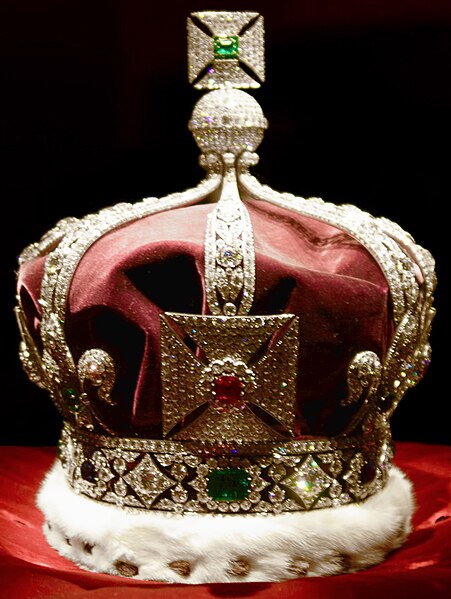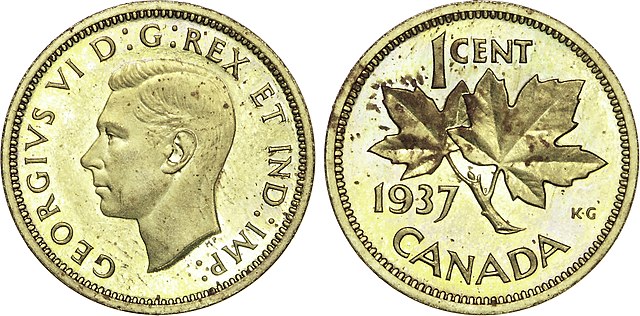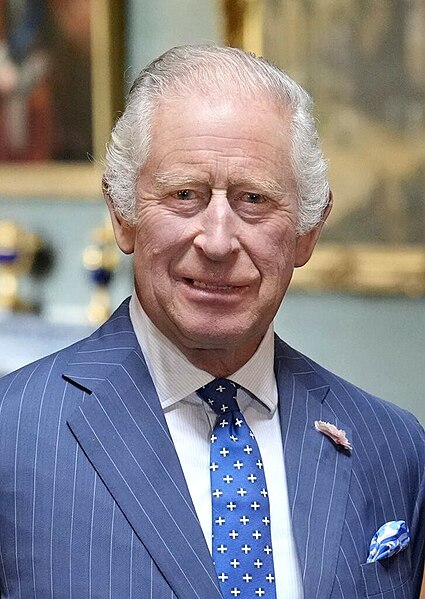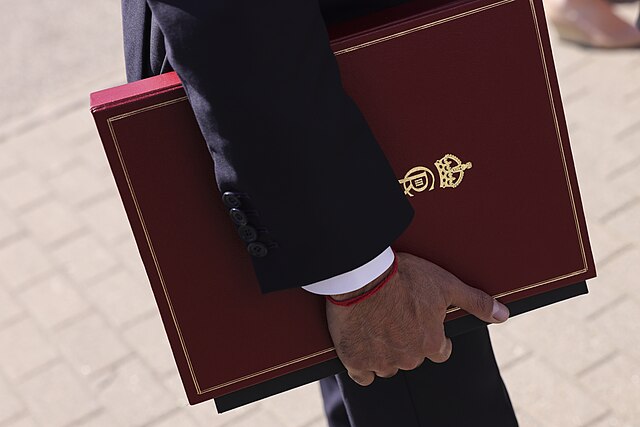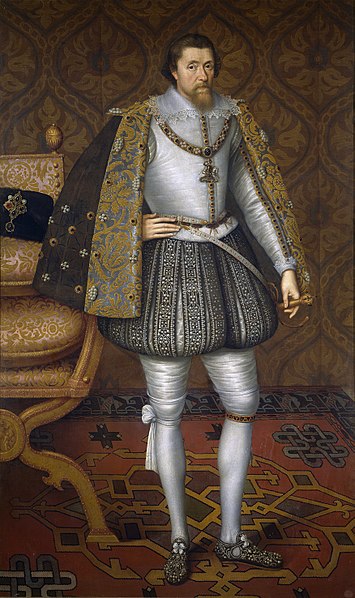Emperor or Empress of India was a title used by British monarchs from 1 May 1876 to 22 June 1948 to signify their sovereignty over the Indian Empire as its imperial head of state. The image of the emperor or empress appeared on Indian currency, in government buildings, railway stations, courts, on statues etc. Oaths of allegiance were made to the emperor or empress and the lawful successors by the governors-general, princes, governors, commissioners in India in events such as imperial durbars.
Last to reign George VI 11 December 1936 – 15 August 1947
New Crowns for Old: Disraeli and Victoria in a cartoon mimicking a scene in Aladdin where lamps are exchanged. She made him Earl of Beaconsfield at this time.
The Imperial Crown of India
A Canadian 1-cent coin with the inscription Ind. Imp. (Indiae Imperator)'
Monarchy of the United Kingdom
The monarchy of the United Kingdom, commonly referred to as the British monarchy, is the form of government used by the United Kingdom by which a hereditary monarch reigns as the head of state, with their powers regulated by the British Constitution. The term may also refer to the role of the royal family within the UK's broader political structure. The current monarch is King Charles III, who ascended the throne on 8 September 2022, upon the death of his mother, Queen Elizabeth II.
Monarchy of the United Kingdom
Ministerial folder with the monarch's emblem
The English Bill of Rights of 1689 curtailed the sovereign's governmental power.
In 1603 James VI and I became the first monarch to rule over England, Scotland, and Ireland together.


